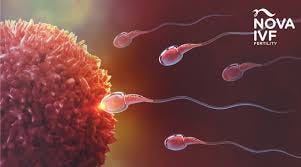Male infertility is the inability of a man to father a child due to various reasons such as low sperm count, poor sperm motility or morphology, hormonal imbalances, anatomical abnormalities, genetic factors, infections, chronic diseases, and lifestyle factors. Infertility affects about 15% of couples globally, and male infertility is estimated to contribute to 30–40% of infertility cases.
Low sperm count is one of the most common causes of male infertility. This can be due to various reasons, such as hormonal imbalances, infections, varicocele (swelling of the veins that drain the testicle), and genetic factors. Poor sperm motility and morphology can also contribute to male infertility, as the sperm may not be able to swim efficiently or may not be properly shaped for fertilization.
Lifestyle factors such as smoking, excessive alcohol consumption, drug abuse, obesity, and exposure to environmental toxins can also affect male fertility. Chronic diseases such as diabetes, hypertension, and autoimmune disorders can also affect male fertility.
Treatment for male infertility varies depending on the underlying cause. In some cases, lifestyle changes such as quitting smoking or losing weight can improve fertility. In other cases, medical treatment such as hormone therapy or surgery may be necessary. Assisted reproductive technologies such as intrauterine insemination (IUI) and in vitro fertilization (IVF) may also be used to help couples achieve pregnancy.
Male Infertility Market growth ?
The male infertility market is expected to experience steady growth in the coming years. Factors contributing to this growth include an increasing prevalence of male infertility, advancements in diagnostic techniques and treatments, and a growing demand for assisted reproductive technologies (ARTs).
According to a report by Allied Market Research, the global male infertility market size was valued at USD 3.1 billion in 2020 and is expected to grow at a compound annual growth rate (CAGR) of 4.2% from 2021 to 2028. The report cites a growing demand for ARTs, increasing public awareness about male infertility, and a rise in the prevalence of lifestyle-related factors contributing to male infertility as key factors driving this growth.

The market is also benefiting from a growing number of collaborations between academic and research institutions, as well as pharmaceutical and biotech companies. These collaborations are leading to the development of new and more effective treatments for male infertility, which is further driving growth in the market.
However, the high cost of male infertility treatments and the limited insurance coverage for these treatments are expected to limit market growth to some extent. Nonetheless, overall, the male infertility market is expected to continue growing as the prevalence of male infertility continues to rise and more effective treatments are developed to address this growing issue.
There is a steady increase in the global infertility rates both in the developed and developing nations. The changing life style, delayed pregnancy and aging are few of the factors driving the global infertility cases. The report excludes basic male infertility treatments such as surgery, treatment for problems in intercourse and hormonal treatment. The report focuses on male infertility and its treatment techniques with focus on drugs and devices. There are various techniques that are used in the diagnosis of the male infertility such as DNA fragmentation, oxidative stress, CASA (computer assisted semen analysis), sperm penetration assay, sperm agglutination and microscopic examination. The DNA fragmentation is an emerging technique which has already gained popularity and is accepted as a routine technique in the developed countries. The technique is yet to gain popularity in the developing regions and yet to be used as a routine technique due to the cost hindrance.
0 Comments